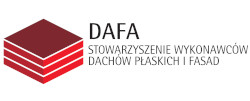Effect of the addition of polypropylene fibers to the bonding agent on pull-off strength of coating made of epoxy resin
techn. Łukasz Kampa, Politechnika Wrocławska; Wydział Budownictwa Lądowego i Wodnego
ORCID: 0000-0003-0884-8076
dr hab. inż. Łukasz Sadowski, prof. uczelni, Politechnika Wrocławska; Wydział Budownictwa Lądowego i Wodnego
ORCID: 0000-0001-9382-7709
Adres do korespondencji: Ten adres pocztowy jest chroniony przed spamowaniem. Aby go zobaczyć, konieczne jest włączenie w przeglądarce obsługi JavaScript.
DOI: 10.15199/33.2020.11.04
Oryginalny artykuł naukowy
Streszczenie. W artykule przeanalizowano wpływ dodatku włókien polipropylenowych do środka gruntującego na wytrzymałość na odrywanie powłoki z żywicy epoksydowej. Włókna dodawano do środka gruntującego w ilości 0,5; 1; 1,5 i 2% w stosunku do masy żywicy epoksydowej z utwardzaczem. Zmodyfikowany środek gruntujący naniesiono na podkład z zaprawy cementowej, a następnie nałożono powłokę. Uzyskane wyniki badań porównano z powłoką referencyjną na podkładzie zagruntowanym środkiem bez dodatku włókien. Na podstawie badań zaobserwowano wzrost wytrzymałości na odrywanie powłoki na podkładzie pokrytym środkiem gruntującym z dodatkiem 0,5 oraz 1% włókien polipropylenowych, w stosunku do powłoki referencyjnej.
Słowa kluczowe: powłoka; środek gruntujący; żywica epoksydowa; włókna polipropylenowe.
Abstract. The article presents an analysis of the addition of polypropylene fibers to the bonding agent on the pull-off strength of coating made of epoxy resin. The fibers were added to the bonding agent in an amount of 0.5%, 1%, 1.5%and 2%in relation to mass of the epoxy resin. The modified bonding agent was laid on substratemade of cementmortar and then the coating was laid. The obtained results were confirmed with the reference coating – without the addition of polypropylene fibers to the bonding agent. Based on the obtained results the increase of the pull-off strength of coatin made with the addition of 0.5 and 1% of polypropylene fibers to the bonding agent in relation the the reference coating.
Keywords: coating; bonding agent; epoxy resin; polypropylene fibers.
Literatura
[1] Ahn N. 2003. „Effects of diacrylatemonomers on the bond strength of polymer concrete to wet substrates”. J. Appl. Polym. Sci. 90, 991–1000.
[2] Chowaniec A., Łukasz Sadowski, A. Żak. 2020. „The chemical and microstructural analysis of the adhesive properties of epoxy resin coatings modified using waste glass powder”. Appl. Surf. Sci. 504, 144373.
[3] Do J., Y. Soh. 2003. „Performance of polymer- modified self-leveling mortars with high polymer– cement ratio for floor finishing”. Cem. Concr. Res. 33, 1497 – 1505.
[4] Dutra R. C., B. G. Soares, E.A. Campos, J. D. DeMelo, J. L. Silva. 1999. „Composite materials constituted by amodified polypropylene fiber and epoxy resin”. J. Appl. Polym. Sci. 73, 69 –73.
[5] HaoY., F. Liu, H. Shi, E. Han, Z.Wang. 2011. „The influence of ultra-fine glass fibers on the mechanical and anticorrosion properties of epoxy coatings”. Prog. Org. Coat. 71, 188 – 197.
[6] Horgnies M.; P. Willieme, O. Gabet. 2011. „Influence of the surface properties of concrete on the adhesion of coating: Characterization of the interface by peel test and FT-IR spectroscopy”. Prog. Org. Coat. 72, 360 – 379.
[7] Kampa Łukasz, Łukasz Sadowski. Środek gruntujący do wykonywania posadzek epoksydowych oraz sposób jego otrzymywania. Zgłoszenie patentowe nr P. 435371.
[8] Krzywiński K., Łukasz Sadowski. 2019. „The effect of texturing of the surface of concrete substrate on the pull-off strength of epoxy resin coating”. Coatings 9, 143.
[9] Pourhashema S., M. Vaezia, A. Rashidib. 2017. „Investigating the effect of SiO2 – graphene oxide hybrid as inorganic nanofiller on corrosion protection properties of epoxy coatings”. Surf. Coat. Technol. 311, 282 – 294.
[10] Sadowski Łukasz; S. Czarnecki, J. Hoła. 2016. „Evaluation of the height 3D roughness parameters of concrete substrate and the adhesion to epoxy resin”. Inter. J. Adhes. Adhes 67, 3 – 4.
[11] Szymanowski J. 2019. „Evaluation of the adhesion between overlays and substrates in concrete floors: Literature survey, recent non-destructive and semi-destructive testing methods, and research gaps”. Buildings 9, 203.
Przyjęto do druku: 29.10 2020 r.
Materiały Budowlane 11/2020, strona 40 - 41 (spis treści >>)




























